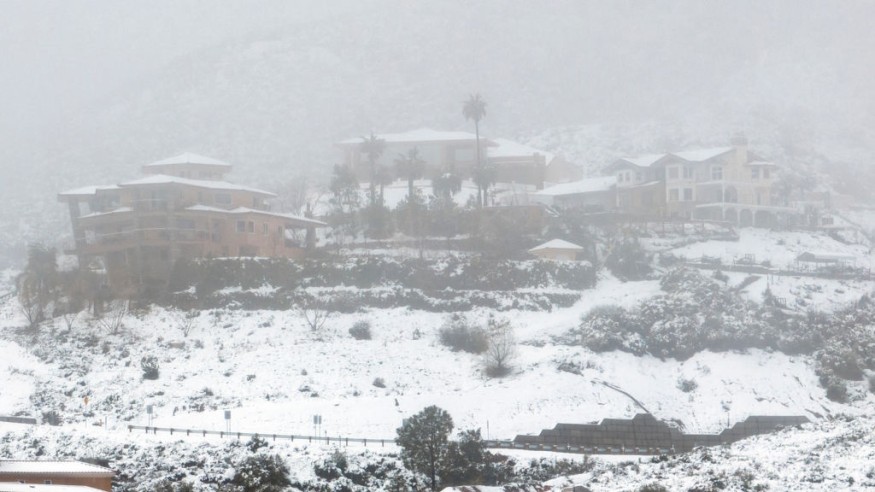Blizzard conditions will occur due to snow with gusty winds over parts of the Northern Plains and Upper Midwest in the coming days until early next week, according to the National Weather Service (NWS).
In addition, scattered severe thunderstorms are possible from eastern Oklahoma to northern Mississippi.
This comes as unsettled weather has continued in California, which experiences rain and snow.
US Blizzard Conditions

The NWS on Saturday, March 11, issued a short-range weather forecast valid from Sunday to Tuesday, March 12 to March 14.
Under the forecast, heavy snow and difficult travel conditions are expected over the Northern Plains and Upper Midwest.
The inclement weather means that air and ground travel could be affected.
As mentioned earlier, severe weather is possible to coincide with the blizzard on the South, particularly in the Ozarks area.
Furthermore, additional rain and mountain snow is will persist along the West Coast by Monday, March 13, according to the US weather agency.
What are Blizzard Conditions?
The NWS defines a blizzard as a storm with a capacity of bringing large amounts of snow or blowing snow, winds greater than 35 miles per hour (56 kilometers per hour), and reduced visibility of less than ¼ mile (0.4 kilometers) within at least three hours, as cited by the University Corporation for Atmospheric Research (UCAR).
Some blizzards are called ground blizzards, which the UCAR explains of having no falling snow; instead, the snow fell already before the blizzard is blown around to create such conditions.
For instance, blizzard conditions normally build up on the northwest side of a massive storm system, the organization added.
In the US, weather authorities have warned that blizzard conditions can lead to disruptive or life-threatening risks.
In particular, blowing snow could lead to whiteout conditions which makes the surrounding area look white, making travel to become dangerous.
The weather phenomenon is reportedly common in the upper Midwest and the Great Plains, but also occurs in other parts of the country except in the Gulf Coast and the California coast.
Blizzards can also occur in other parts of the world, UCAR added.
The Buffalo Blizzard
It was late December in 2022 when a historic blizzard wreaked havoc across the US, especially in the Northeast region.
Dubbed as the "buffalo blizzard," a power snowstorm leading to the last week of December killed over 60 people due to a lake effect snow that produced heavy snow at the rate of one to two inches per hour, according to the NWS, as cited by NBC News.
During MSNBC's "Morning Joe" program, Buffalo, New York Mayor Bryon Brown stated the storm could be the worse that the city has seen in more than 50 years.
1972 Iran Blizzard
A notable catastrophic weather even outside the US is known as the "1972 Iran Blizzard" which killed over 4,000 people during a week-long period of winter storms and cold temperatures.
Iran's decades-old blizzard in the northwestern, central, and southern part of the country that time has been considered as the world's deadliest snowstorm in history, Times Now News.
© 2025 NatureWorldNews.com All rights reserved. Do not reproduce without permission.





